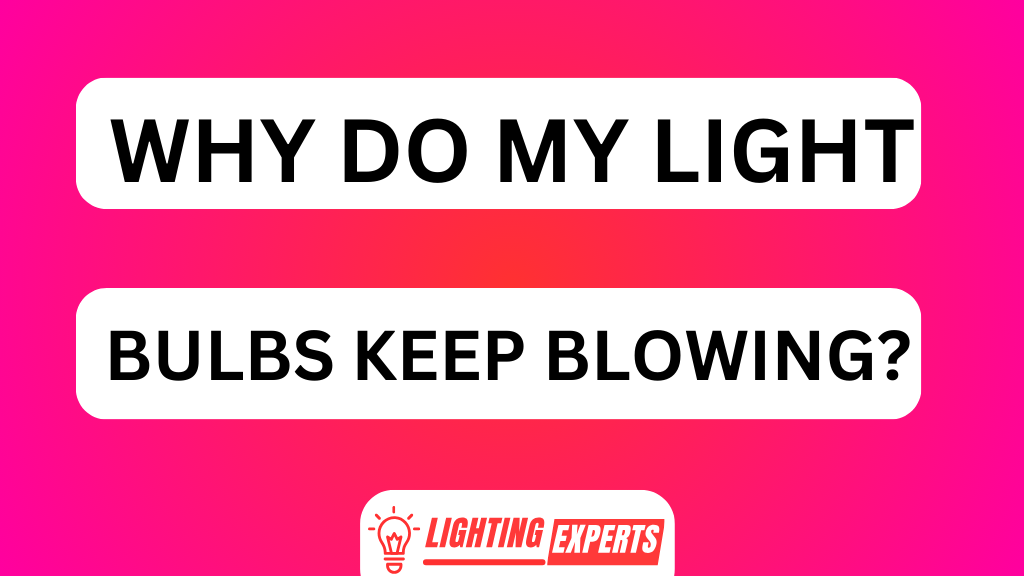The longevity of Light Emitting Diodes (LEDs) is a subject of great interest due to their increasing use in various applications. This article aims to provide a comprehensive understanding of the factors influencing LED lifespan.
Heat management techniques play a crucial role in determining the lifespan of LEDs. Proper heat dissipation is essential to prevent excessive temperature buildup, which can degrade the LED’s performance and shorten its lifespan. Various cooling methods, such as heat sinks and thermal pads, can be employed to manage heat effectively.
Comparisons with traditional lighting sources also shed light on LED lifespan. LEDs generally have a longer lifespan compared to traditional incandescent bulbs or fluorescent lights. This is due to the different mechanisms of light generation and the absence of filament or gas-filled tubes that can wear out over time.
Strategies for maximizing LED longevity will be discussed. This includes proper installation and maintenance practices, such as avoiding overdriving the LEDs and ensuring adequate ventilation. Additionally, selecting high-quality LED products from reputable manufacturers can contribute to a longer lifespan.
Misconceptions surrounding LED lifespan will be addressed. One common misconception is that LEDs last forever, which is not true. While LEDs have a significantly longer lifespan compared to other lighting sources, they do degrade over time. Understanding the expected lifespan of LEDs can help manage expectations and plan for replacements when necessary.
Indicators indicating the end of an LED’s lifespan will also be discussed. These indicators may include a noticeable decrease in brightness, color shifting, or flickering. Recognizing these signs can help users determine when it is time to replace an LED.
By exploring the different types of LEDs and discussing emerging technologies, this article offers insights into the future prospects of LED lifespan enhancement. Ongoing advancements in LED technology, such as improved materials and manufacturing processes, hold promise for further extending LED lifespans.
Key Takeaways How Long Do Leds Last?
- Quality of materials used in manufacturing affects LED lifespan
- Operating temperature plays a crucial role in LED longevity
- Proper thermal management techniques are essential for LED lifespan
- LED bulbs have a significantly longer lifespan compared to traditional incandescent bulbs
Factors Affecting LED Lifespan
The lifespan of LEDs is influenced by various factors. Understanding LED degradation and the factors affecting LED performance are crucial in determining their longevity.
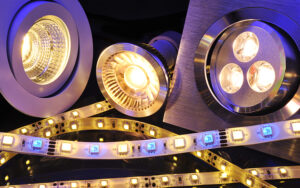
One important factor is the quality of materials used in manufacturing the LED, including the semiconductor material and packaging. Higher-quality materials result in better heat dissipation, reducing stress on the LED and extending its lifespan.
Another factor is operating temperature, as excessive heat can accelerate LED degradation. Proper thermal management through heatsinks or cooling systems is essential to maintain optimal temperature levels.
Additionally, electrical current plays a role; overdriving LEDs with high currents can lead to premature failure.
Finally, environmental conditions such as humidity and exposure to contaminants can also impact LED performance.
Understanding LED Lifespan Ratings
Understanding the lifespan ratings of LED lights is essential for evaluating their durability and performance. The lifespan of an LED light is typically measured in hours, with higher numbers indicating longer lifespans.
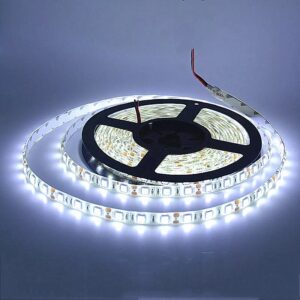
Several factors can affect the performance and longevity of LEDs, including temperature, current levels, and voltage fluctuations. LED lights are sensitive to high temperatures, which can reduce their lifespan. Additionally, exceeding recommended current levels or exposing LEDs to voltage fluctuations can decrease their performance and shorten their lifespan.
Proper installation is crucial for maximizing LED lifespan. Ensuring that LEDs are installed correctly, using appropriate fixtures and heat sinks to dissipate heat effectively, can help maintain optimal operating conditions for the lights.
The Role of Heat in LED Lifespan
Heat plays a crucial role in the lifespan of LEDs, as excessive heat can significantly reduce their longevity.
The efficient management of heat is essential for maintaining optimal LED performance and prolonging their lifespan.
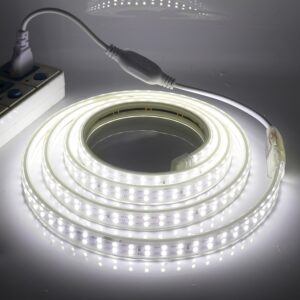
This requires implementing effective thermal management techniques, such as heat sinks, to dissipate excess heat and ensure the LEDs operate within safe temperature ranges.
Heat and LED Lifespan
One factor that influences the lifespan of LEDs is the level of heat they are exposed to. Heat management is crucial for ensuring optimal performance and longevity of LEDs.
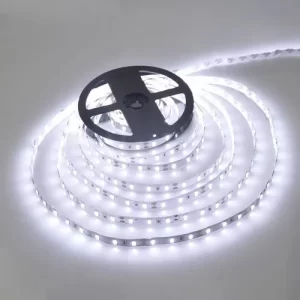
Thermal conductivity plays a significant role in dissipating heat generated by the LED chip. Materials with high thermal conductivity, such as aluminum or copper, are commonly used in LED designs to efficiently transfer heat away from the chip.
Effective temperature management involves utilizing advanced cooling techniques like heat sinks, fans, or passive cooling systems to maintain an appropriate operating temperature range for the LED. Excessive heat can accelerate degradation processes within the LED structure, such as solder joint fatigue and thermal stress, leading to reduced efficiency and premature failure.
Thermal Management for Leds
Thermal management techniques for LEDs involve the use of materials with high thermal conductivity, such as aluminum or copper, to efficiently dissipate heat away from the LED chip. This is crucial because excessive heat can degrade LED performance and significantly reduce its lifespan.
To address this issue, several heat dissipation techniques have been developed:
- Heat sinks: These are passive cooling devices that absorb and disperse heat away from the LED chip through conduction and convection.
- Thermal pads: These are soft, compressible pads placed between the LED chip and the heat sink to improve thermal contact and enhance heat transfer.
- Liquid cooling systems: In some cases, liquid-filled tubes or pipes are used to circulate coolant around the LED module, effectively removing excess heat.
LED Lifespan Vs. Traditional Lighting
This discussion examines the lifespan of LED lights compared to traditional incandescent lighting and explores the durability of LED lights.
The lifespan of LED lights is significantly longer than that of incandescent bulbs. LED lights have an average lifespan of 25,000 to 50,000 hours, while incandescent bulbs typically last only around 1,000 hours.
Additionally, LED lights are more durable than incandescent bulbs as they do not have fragile filaments or glass envelopes and are resistant to shock and vibration.
LED Vs. Incandescent Lifespan
The lifespan of LED bulbs is significantly longer than that of incandescent bulbs. LED bulbs can last up to 25,000-50,000 hours, while incandescent bulbs typically have a lifespan of only about 1,000 hours. This stark contrast in longevity is primarily due to the differences in technology and design between these two types of lighting.
Benefits of the longer lifespan of LED bulbs include:
- Energy efficiency: LEDs consume less energy compared to incandescent bulbs, resulting in lower electricity costs and reduced environmental impact.
- Cost savings: The extended lifespan of LEDs means fewer replacements are necessary, leading to cost savings over time.
- Reduced maintenance: With their long lifespan, LED bulbs require less frequent replacement, reducing the need for maintenance efforts.
Considering these advantages, it becomes evident why many consumers are switching from traditional incandescent lighting to LEDs. Moving forward, it is essential to explore another aspect related to LED lights – their durability.
Durability of LED Lights
One important aspect to consider regarding the durability of LED lights is their resistance to physical damage and vibrations. LEDs are solid-state devices, meaning they do not have any moving parts like traditional incandescent bulbs. This makes them highly resistant to physical shocks and vibrations that can easily break or damage other types of lighting sources. Additionally, LEDs are typically designed with robust materials such as epoxy lenses and sturdy housing to protect the internal components from external forces.
However, there are some misconceptions about LED durability that need to be addressed. One common misconception is that LEDs will last forever without any maintenance. While LEDs are known for their long lifespan compared to incandescent bulbs, they can still degrade over time due to various factors such as excessive heat or poor quality manufacturing processes. To maximize the lifespan of LED lights, it is important to follow manufacturer guidelines for installation and operation, ensure proper ventilation and cooling, and avoid operating them at extremely high temperatures.
Overall, LED lights have excellent durability due to their resistance to physical damage and vibrations. However, it is crucial not to underestimate the importance of proper installation and maintenance in order to fully benefit from their extended lifespan capabilities.
How to Maximize the Lifespan of Your LEDs
To optimize the lifespan of LEDs, certain measures can be taken. These measures are aimed at maximizing efficiency and troubleshooting common issues that can affect the longevity of LED lights.
Proper heat management: Heat is a major factor that can impact the lifespan of LEDs. Ensuring adequate ventilation and avoiding excessive heat buildup around the LED fixtures is crucial.
Using appropriate drivers: The driver is responsible for regulating the electrical current supplied to the LED. It is important to use high-quality drivers that match the voltage requirements of the LEDs to prevent overdriving or underdriving, which can shorten their lifespan.
Regular maintenance: Routine inspection and cleaning of LED fixtures help identify any potential problems early on. This includes checking for loose connections, damaged wiring, or signs of moisture ingress that could affect performance and durability.
Common Misconceptions About LED Lifespan
Contrary to popular belief, the lifespan of LEDs is not solely determined by their initial hours of operation. There are several common misconceptions about LED lifespan that need to be addressed in order to maximize the longevity of these lighting devices. One misconception is that LEDs will burn out quickly if they are turned on and off frequently. However, research has shown that frequent switching does not significantly impact LED lifespan. Another misconception is that higher wattage LEDs last longer than lower wattage ones. In reality, the lifespan of an LED depends on factors such as temperature, current density, and overall design quality rather than its wattage rating. Lastly, some people believe that running LEDs at maximum brightness reduces their lifespan. While excessive heat can negatively affect an LED’s performance over time, modern designs incorporate heat management systems to mitigate this issue.
| Common Misconceptions | Maximizing Lifespan |
|---|---|
| Frequent On/Off | Proper Heat Management |
| Higher Wattage | Optimal Current Density |
| Maximum Brightness | Quality Design |
Signs Your LED Is Approaching the End of Its Lifespan
Several indicators can be observed to determine if an LED is approaching the end of its lifespan. These signs are crucial in maximizing LED lifespan and can help debunk common misconceptions about LED lifespan.
- Decreased brightness: As LEDs age, they gradually lose their brightness. This decline in luminosity may not be immediately noticeable but becomes more apparent over time.
- Color shift: Another sign of an aging LED is a change in color temperature. The light emitted by the LED may become warmer or cooler, indicating a deterioration of the phosphor coating.
- Flickering or intermittent operation: When an LED starts flickering or exhibits intermittent operation, it suggests that the internal components are failing. This could be due to aging or other factors such as poor thermal management.
Longevity of Different LED Types
Different types of LEDs have varying lifespans, which can be influenced by factors such as the quality of materials used, operating conditions, and proper maintenance. The longevity of an LED is an important characteristic to consider when selecting lighting solutions for various applications. To provide a comprehensive understanding of the topic, let’s examine the lifespans of different LED types in the table below:
| LED Type | Average Lifespan |
|---|---|
| Traditional | 25,000 hours |
| High-Power | 50,000 – 100,000 hours |
| Organic | 15,000 – 20,000 hours |
Factors affecting efficiency include temperature variations and current levels. Higher temperatures tend to reduce an LED’s lifespan due to accelerated degradation of materials. Moreover, excessive current levels can generate more heat and cause thermal stress on the LED components. Additionally, voltage variations can impact LED performance. Overvoltage might cause increased current flow leading to overheating and premature failure while undervoltage may result in reduced light output and inefficient operation.
The Future of LED Lifespan Technology
Advancements in LED technology are continuously being made to improve the lifespan of these lighting solutions. LED manufacturers and researchers are investing heavily in research and development to enhance the durability of LEDs for future applications.
The following future advancements are expected to contribute to extended durability:
- Improved Heat Dissipation: Efficient heat dissipation methods, such as advanced thermal management materials and designs, will help minimize temperature-related stress on LED components.
- Enhanced Material Quality: Researchers are working on developing new materials with improved resistance to degradation, ensuring longer-lasting LEDs.
- Optimized Driving Currents: By optimizing driving currents, LED manufacturers aim to reduce stress on the semiconductor junction, which can extend the overall lifespan of LEDs.
These developments hold promise for pushing the boundaries of LED longevity, offering more reliable and durable lighting solutions for various applications.
As research continues, it is anticipated that future generations of LEDs will further increase their lifespan and provide even greater energy efficiency.
Frequently Asked Questions
Do Leds Emit Heat Like Traditional Lighting Options?
Leds do emit heat, but at much lower levels compared to traditional lighting options. The heat emission of leds is primarily concentrated in the base and backside of the bulb, with minimal heat dissipation towards the front.
Can the Lifespan of Leds Be Extended by Using Them at Lower Brightness Levels?
The lifespan of LEDs can be extended by using them at lower brightness levels. This is because LED brightness levels have a direct effect on energy consumption, which in turn affects the overall lifespan of the LED. Factors such as heat dissipation and manufacturing quality also play a role in determining the longevity of LEDs.
Are There Any Specific Maintenance Requirements to Maximize the Lifespan of Leds?
Energy efficient maintenance tips can help maximize the lifespan of LEDs. These may include proper cleaning, avoiding excessive heat, and using surge protectors. Common misconceptions about LED lifespan should be addressed to ensure accurate understanding and effective maintenance practices.
How Do LED Lifespans Compare to Other Energy-Efficient Lighting Options?
The lifespans of LEDs, in comparison to other energy-efficient lighting options, are influenced by factors such as quality of manufacturing and usage patterns. LEDs generally exhibit longer lifetimes, providing increased durability and cost-effectiveness over traditional lighting options.
Are There Any Advancements in LED Lifespan Technology That We Can Expect in the Future?
Advancements in LED lifespan technology are expected in the future. These developments will likely improve the durability and longevity of LEDs, potentially extending their operational lifespans and making them even more reliable as a lighting solution.
Conclusion
In conclusion, the lifespan of LEDs is influenced by various factors such as operating conditions, heat management, and quality of the components. Understanding LED lifespan ratings and maximizing their longevity can help ensure optimal performance.
While traditional lighting options have shorter lifespans compared to LEDs, advancements in LED technology continue to improve their durability. As we look towards the future, it is clear that LED lifespan technology will only continue to evolve.
With this in mind, one may wonder: How much longer can LEDs last?



